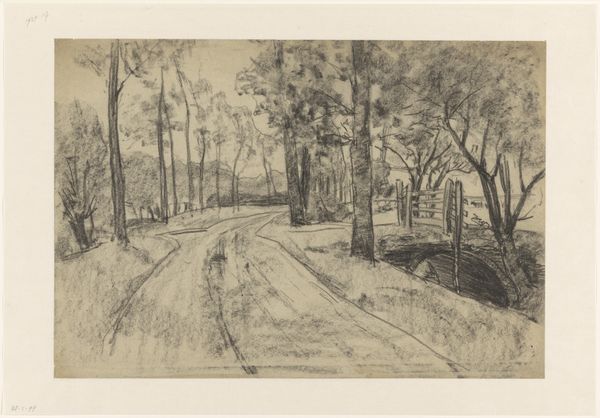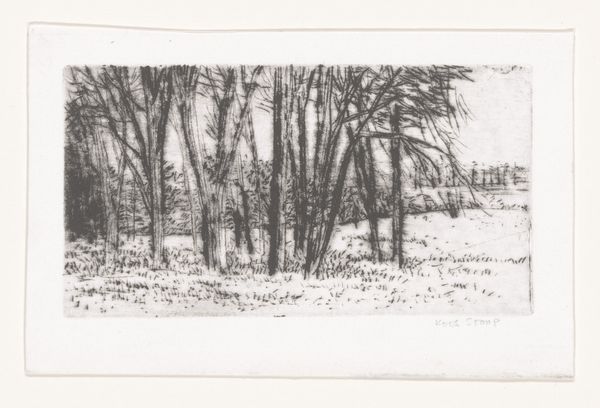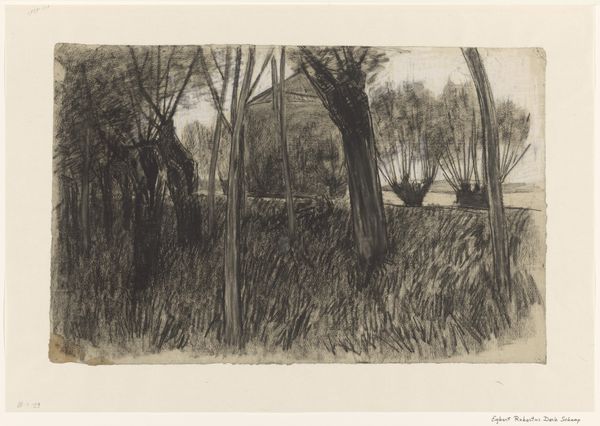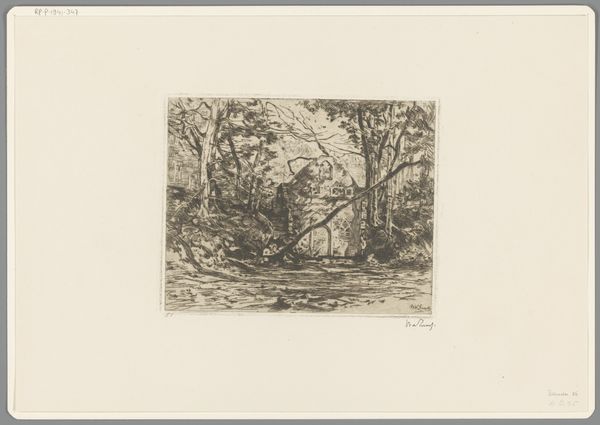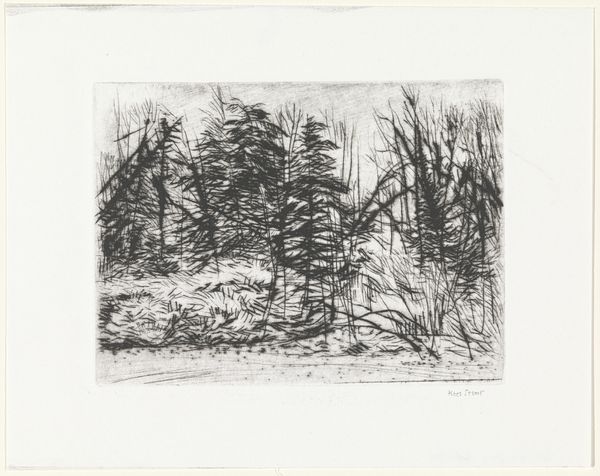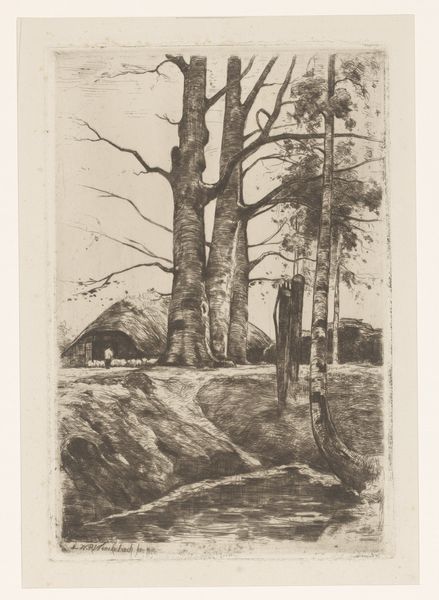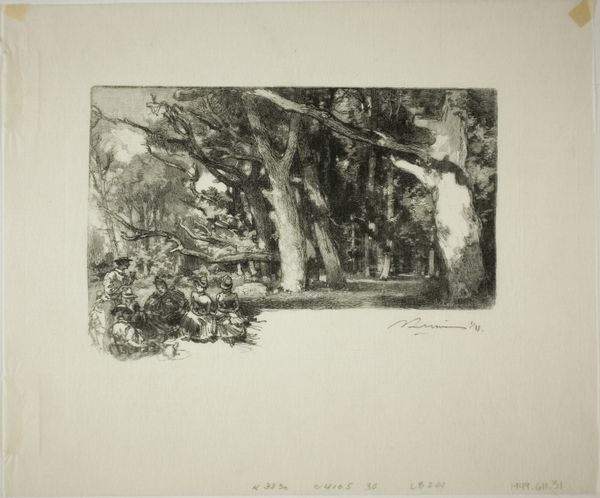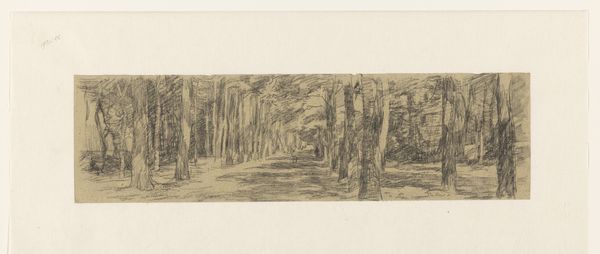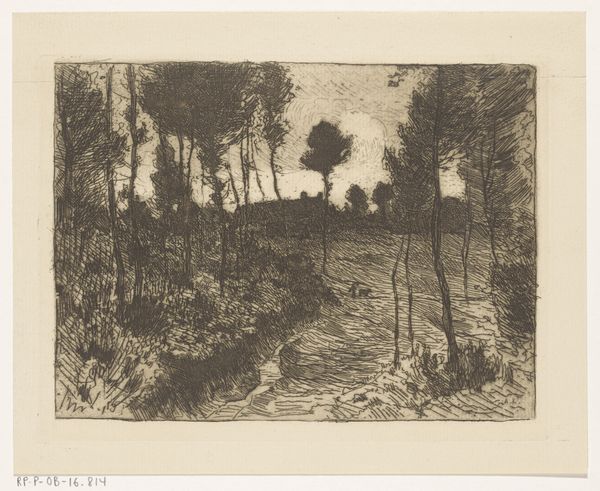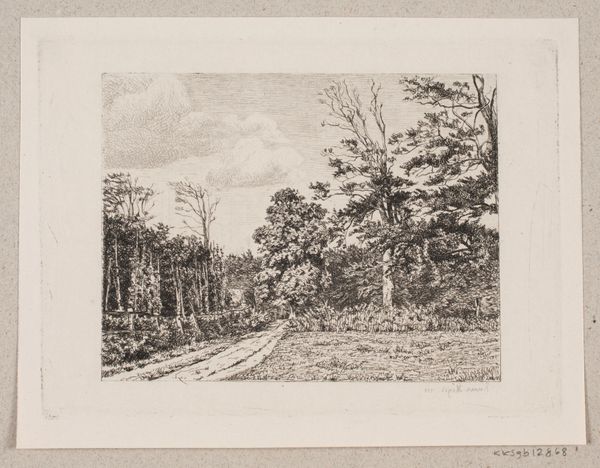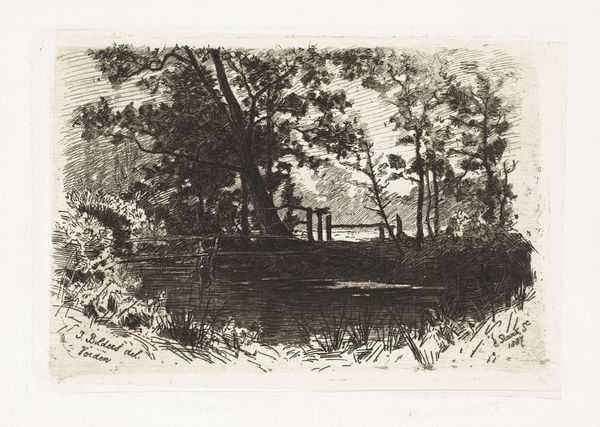
drawing, print, paper, ink, woodcut
#
drawing
#
ink paper printed
# print
#
old engraving style
#
landscape
#
paper
#
personal sketchbook
#
ink
#
forest
#
pen-ink sketch
#
woodcut
#
line
#
sketchbook drawing
Dimensions: height 240 mm, width 277 mm, height 140 mm, width 200 mm
Copyright: Rijks Museum: Open Domain
Curator: Kees Stoop's "Bos en schoorsteenpijp," dating from around 1944 to 1990. The medium appears to be woodcut and ink on paper. What are your initial thoughts? Editor: The composition immediately strikes me. It feels like a scene observed through trees, an industrial presence softened by the natural world. It also presents the complicated relationship between man and the natural world. Curator: The layering of trees against the more distant industrial element invites us to consider our impact on ecological systems, an issue very much present in postwar art discourse. It begs to wonder whether our role within nature could possibly promote violence through acts of labor. Editor: Right. The materiality speaks to that as well. The process of creating a woodcut itself involves labor. It's a deliberate, physical process of removing material, much like industrial extraction impacts the forest's ecology. The fact that Stoop used paper made from trees in his production speaks to our means of industrialization. Curator: Stoop often returned to this theme, positioning his work as an intervention, subtly advocating for awareness within increasingly despoiled landscapes through urban development and industrial proliferation, as can be seen by his recurring subjects involving images of architectural elements and nature.. Editor: And there’s an intentionality here in placing that chimney so clearly in the distance. It’s ever-present, always visible despite the visual "buffer" created by nature in the forefront of the work. It also shows the lack of separation of the industrial site from the land that it is affecting. Curator: The very act of capturing this image through woodcut and ink also emphasizes the artist’s agency in mediating the perception of the scene. We're invited to engage actively, thinking critically about the subject's location and presence within it as a place that requires intervention, not passivity. Editor: Thinking about Stoop’s process and his careful hand labor alongside the themes evoked makes this much more than just a landscape study. It underscores how art can function as both a record of and a commentary on our complex relationship with the materials and spaces around us. Curator: I think reflecting on how Stoop situated his subject matter forces us to see both the work and world surrounding us anew and how it reflects on ourselves.
Comments
No comments
Be the first to comment and join the conversation on the ultimate creative platform.
